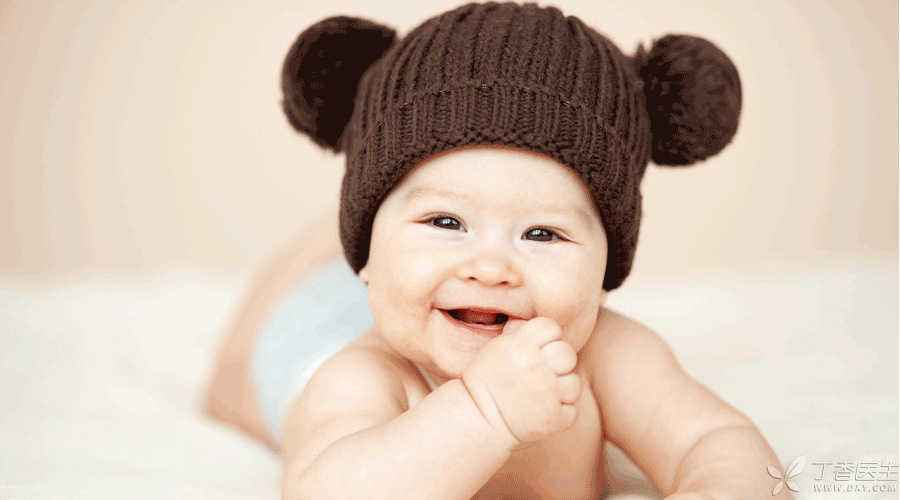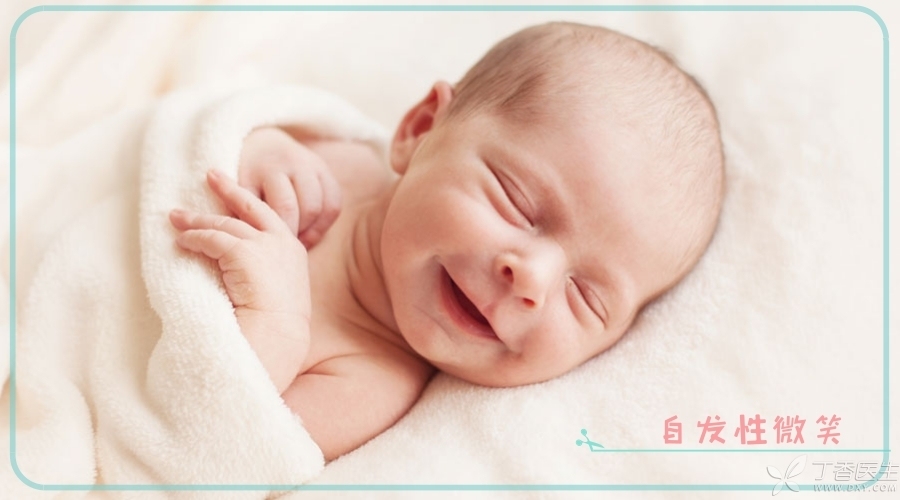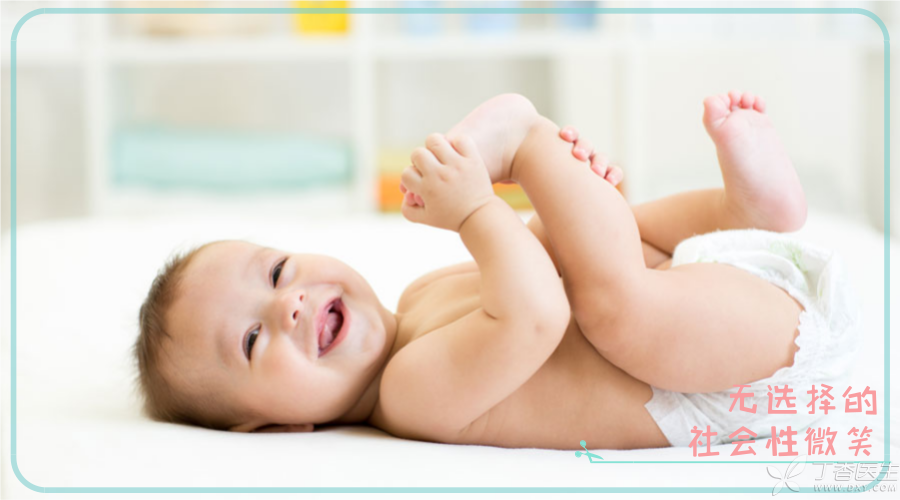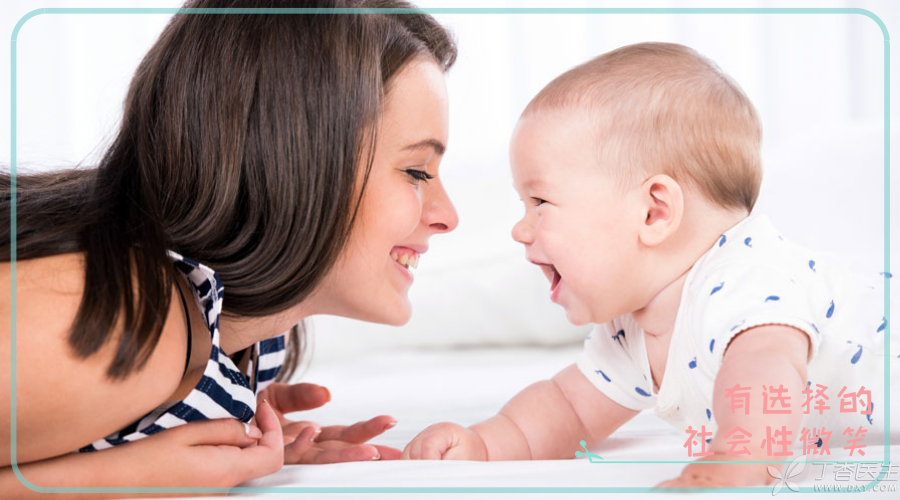
The baby’s smile is the best thing in the world.
Do you still remember the first time your baby smiled at you?
I believe many people will say: [Our baby smiled at me not many days after birth.]
Yes, many babies will smile before the full moon, but the smile at this time is reflective, and sometimes it may just squeeze the facial features.
In fact, even the development of the simple expression of smile has to go through four different stages.
The first stage: 0 ~ 5 weeks, spontaneous smile
As mentioned earlier, babies will smile before the full moon. Laughter during this period is related to the instability of central nervous system activity.
This stage of laughter mainly depends on [mouth]. If you look carefully, you will find that when the baby smiles during this period, the muscles around the eyes do not contract and the rest of the face remains relaxed.
Therefore, psychologists call the baby’s smile [mouth smile] to distinguish it from the social smile that comes later.
Whenever the baby is full of food and drink, or enters the REM sleep stage after falling asleep peacefully, he will show a spontaneous smile. Gentle touching, shaking, and the mother’s soft voice will also make the baby smile.
Although these smiles are not directly related to happiness and friendliness, they do comfort tired parents-at least it means that the baby is comfortable.
Advice to Baoma Baopa:
In this stage, parents can judge whether the baby is in a comfortable state according to whether the baby smiles.
If the baby smiles, it means that the baby has eaten enough and slept soundly.
If the baby does not smile or cry, it may mean that the baby is hungry, hot or in other uncomfortable conditions.

The second stage: 3, 4 weeks onwards, no choice of social smile
At the end of the first month, the baby begins to smile at moving, interesting and noticeable scenes. For example, brightly colored dolls and [jingling] small bells. Although the baby at this time cannot distinguish between individuals of special significance to him, human voices and human faces are especially easy to cause their smiles.
At this time, the baby’s smile is very different from that of the previous stage. When the baby smiles, his eyes are bright, the skin around his eyes will wrinkle up, and he will be very active when smiling. Although the duration is quite short, it is enough to excite parents.
Parents who work day and night will surely feel refreshed and dance happily when they see the baby’s [heartfelt] smile.
About the 5th week, the baby began to smile at the moving face. By the 8th week, even if the face stopped moving, the baby could still give a lasting smile at it.
At this time, the baby’s smile to strangers is not much different from that to familiar caregivers, but the smile to acquaintances is more than that to strangers.
This kind of situation lasts for about 6 months, and babies will smile when they see familiar faces, unfamiliar faces and even masks.
At this time, the babies are like pure little angels, simple and beautiful. In their eyes, everything in the world is beautiful and will make them happy. They never mean their smiles and are willing to show their friendship to everyone.
At this stage, parents may try every means to make the baby smile. The spirit of fighting for the baby’s smile seems to be no less than Zhou Youwang’s drive (although this is not an appropriate metaphor) to praise his wife’s war drama.
Advice to Baoma Baopa:
It is suggested that parents hold colorful toys with different shapes to swing around in front of the baby’s eyes, and can also prepare some lovely masks or headdresses to wear on their heads to make the baby laugh.
On the premise of ensuring that the baby has enough sleep, don’t let the baby fall asleep if it’s okay, give the baby more visual stimulation, and also help the development of its brain.

The third stage: from 3 months onwards, the beginning of selective social smile
Although babies at this stage do not know who is an acquaintance and who is a stranger, careful parents may find that from the beginning of 3 months, the number of times the baby smiles starts to increase, especially when the mother appears (the baby seems to begin to realize that the mother is the first person in the world to care for herself and take care of herself).
When you observe this phenomenon, it marks the beginning of the transition to the stage of “selective social smile”. At this time, the baby seems to finally realize that the two people who are winking at him every day in front of him are communicating with himself, and he can get more attention just by touching his lips and smiling slightly.
Therefore, he began to try to repay the human face with a smile. This is the way he first learned to communicate with people. Since then, from the beginning of communication with us, he has really started to communicate with the world. The smile at this time, unlike the previous reflective smile, reflects the [happy] mood that the baby initially develops, which is also one of the basic emotions that the baby first has.
Advice to Baoma Baopa:
Mom and Dad, if your baby has already produced [selective social smile], then spend more time interacting with him. Although the baby can’t speak yet, he is already communicating with you with a smile.

The fourth stage: from 5 to 6 months, selective social smile
As the ability to process visual information increases, babies begin to be able to identify familiar faces and other things, and also begin to respond differently to different people.
In front of familiar people, the baby will smile freely. However, when facing strangers, they will have instinctive vigilance.
When parents find this change in the baby, they will also feel closer to the baby. At this time, the baby will also express its attachment to parents with this [selective social smile].
Parents may find that as the baby grows older, it becomes more and more difficult to make the baby laugh. What the baby used to like to see may now be [dismissive].
To tell you quietly, this is because the baby’s cognitive ability is continuously developing, and more and more [mature] babies are becoming more and more picky about what they like. Only those more complicated and fresh things can successfully attract the baby’s attention.
Advice to Baoma Baopa:
Mom and Dad, When you find that your baby is no longer interested in the old toys, It may be necessary to consider changing new toys for the baby. In addition, if unfamiliar uncles and aunts show their kindness to the baby, but the baby is ungrateful, don’t label the baby [afraid of giving birth] and [introverted]. This is just the instinctive reaction of the baby, and it just shows the unique attachment of the baby to his parents.
